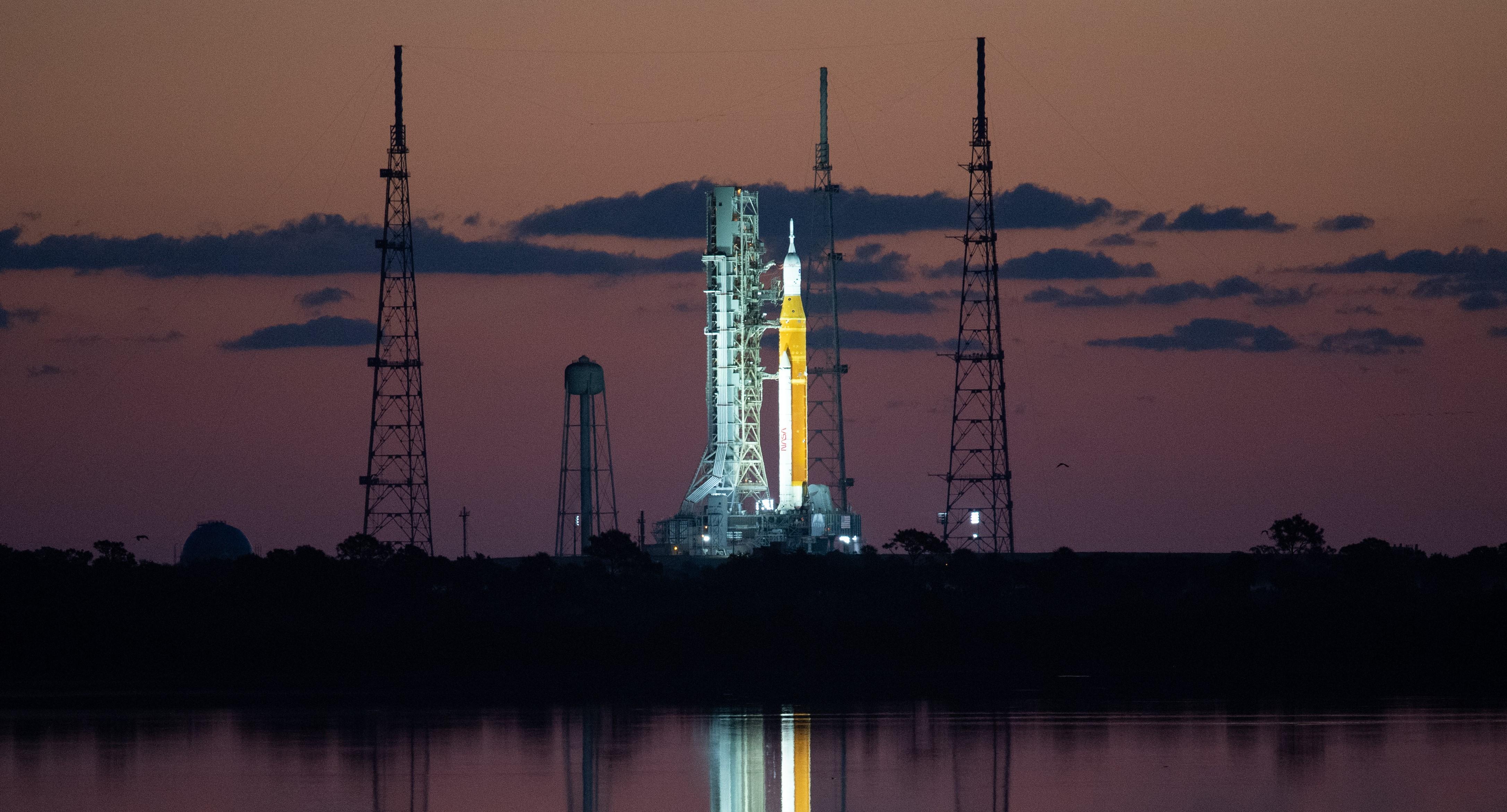
For the second day in a row, NASA halted the Wet Dress Rehearsal (WDR) for the Artemis I Space Launch System (SLS) and Orion crew capsule at the agency’s Kennedy Space Center in Florida during the early evening of April 4 due to an issue with a liquid hydrogen propellant pressure vent valve
The test was scrubbed at 5 p.m. EDT while the Mission Management Team (MMT) and Launch Control Team assessed their options for resuming the complex countdown simulation NASA initially hoped to complete during April 1-3.
As activities picked up early April 4 following a scrub on April 3 due to a malfunction of the primary and secondary fans associated with the Mobile Launch Platform (MLP) upon which the 32-story SLS sits, NASA was aiming to wrap up at 6:02 p.m. EDT, with the offload of 755,000 gal. of the liquid oxygen and hydrogen propellants from the SLS core and upper stages.
The liquid hydrogen pressure vent value was not the only issue that arose after the MMT provided a “go” to proceed with the tanking of the SLS on April 4 at 7:40 a.m. EDT. The countdown itself resumed at 10:52 a.m. EDT, at the launch minus 7 hr., 10 min. point.
Prior to the decision to proceed, WDR personnel resolved an issue with the primary and secondary fans associated with the MLP. Air flow from the fans is required to pressurize enclosed areas of the MLP to keep hazardous gases from harming launch pad personnel.
Shortly before 10 a.m. EDT, the liquid oxygen propellant lines began undergoing a chill-down to set the stage for the loading and top off of cryogenic propellants stored at Launch Pad 39B.
Two issues arose prior to the liquid hydrogen vent value concern:
• An outage of the nitrogen gas flow required for propellant loading to ensure a nonflammable environment within the SLS. The issue was addressed while the countdown was on hold.
• Shortly after Charlie Blackwell-Thompson, NASA’s Exploration Ground Systems program Artemis launch director, gave the “go” to begin tanking about 10 a.m. EDT, an issue arose with the temperature limit for the liquid oxygen prior to the start of the super-cold liquid propellant’s flow into the SLS core stage. Once the issue was resolved, the liquid oxygen chill-down operations resumed about 2:35 p.m. EDT.
Chill down of the liquid hydrogen tank began at 3:44 p.m. EDT. But as launch teams were ready to begin the liquid hydrogen propellant load at about 4:15 p.m. EDT, they discovered a vent valve that would not open at the 160-ft. level of the 370-ft.-tall MLP.
As NASA’s MMT, led by Mike Sarafin, and the Launch Control Team discussed how to proceed with the WDR, they had to take into account two crewed missions planned for launch to the International Space Station from Kennedy.
Axiom Space’s Axiom-1 mission, the first U.S. commercial mission to the ISS, originally scheduled for an April 6 launch from Launch Pad 39A, was moved to earlier than April 8 following the April 3 WDR scrub. The 10-day mission with four private astronauts is to spend eight days docked to the ISS.
The SpaceX Crew Dragon-4 mission is slated to launch to the ISS on April 20 from Kennedy with four U.S. and European astronauts for a six-month tour of duty as part of a multi-week crew exchange that began in March.
The WDR, which got underway on April 1, is to set the stage for Artemis I, the first test launch of the SLS and Orion on a multi-week mission around the Moon without astronauts on board. Following the WDR, the rocket with Orion on top is to be rolled back to Kennedy’s towering Vehicle Assembly Building, where its systems will undergo a checkout while the WDR performance is evaluated before a target launch date is set.
Artemis II, a second circumlunar test flight of the SLS and Orion with four astronauts on board is to follow, targeted for 2024.
Artemis III, targeted for 2025, is to land astronauts on the surface of the Moon for the first time since the Apollo era when it touches down at the lunar south pole.
Two astronauts, delivered to the surface by a commercially provided Human Landing System, are to spend about a week exploring the south pole region, which is believed to host large amounts of subsurface water ice—a potential life support resource and source of liquid oxygen and hydrogen rocket propellant.
In addition to assembling a lunar-orbiting Gateway space station, NASA and its international and commercial partners plan to establish a south pole base camp—assets that are to help prepare for future human expeditions to Mars.





